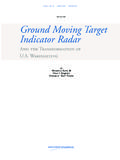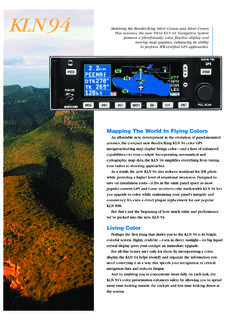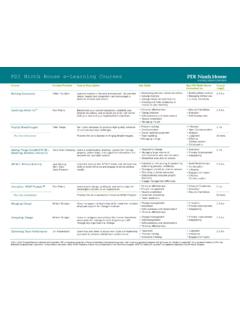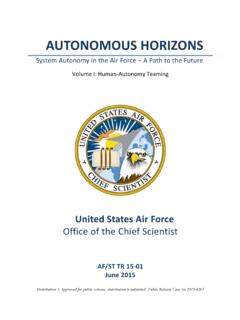Transcription of HEADQUARTERS UNITED STATES AIR FORCE …
1 DEPARTMENT OF THE AIR FORCE . HEADQUARTERS UNITED STATES AIR FORCE . WASHINGTON, DC. AFI11-290_AFGM2018-01. 14 June 2018. MEMORANDUM FOR DISTRIBUTION C. FROM: HQ USAF/A3. 1630 Air FORCE Pentagon Washington, DC 20330-1630. SUBJECT: Air FORCE Guidance Memorandum to AFI 11-290, Cockpit/Crew Resource Management Program. 1. By Order of the Secretary of the Air FORCE , this Guidance Memorandum immediately implements changes to AFI 11-290, Cockpit/Crew Resource Management Program. Compliance with this memorandum is mandatory. To the extent its directions are inconsistent with other Air FORCE publications, the information herein prevails IAW AFI 33-360, Publications and Forms Management. 2. Based on an Air FORCE Safety Agency recommendation following a Class A aircraft accident, the following changes are made: 3.
2 CRM core curricula. Core curricula will include the following knowledge and skill sets during classroom and simulator training, see AF Form 4031, CRM Skills Criteria Training/Evaluation Form: Communication. Includes knowledge of common errors, cultural influences, and barriers ( , rank, age, experience, position, etc.). Skills will encompass listening, feedback, precision and efficiency of communication with all members and agencies ( , Crewmembers, Wingmen, Weather, ATC, Intelligence, etc.). Use precise terminology, acknowledge all communications, and ask questions/provide clarification when necessary. Crew/Flight Coordination. Knowledge and skills required within (internal) and outside the crew/flight members (external) for mission coordination, flight/mission integrity contracts, team- building, leadership, command authority, responsibility, behavioral styles, assertiveness, persistence, conflict resolution, hazardous attitudes, legitimate avenues/methods of dissent, and solution driven statements.
3 Adapt as situational demands require, focus attention on task, and ask for inputs. Mission Analysis. Includes pre-mission analysis and planning, briefing, ongoing mission evaluation, and post mission debrief. Clearly define mission overview/goals. Analysis instruction will include specific Threat and Error Management tools and techniques. Debrief instruction will include aircrew responses and outcomes to threats and errors. Risk Management (RM)/Decision Making. Includes risk assessment, the risk management processes (Deliberate, Real Time RM)/tools, breakdowns in judgment and flight discipline, problem-solving, evaluation of hazards, and control measures. Identify contingencies and alternatives, gather all available decision data, and clearly state decisions. situational awareness .
4 Includes knowledge and skill objectives for identifying errors, preventing the loss of situational awareness , recognizing the loss of situational awareness , and techniques for recovering from the loss of situational awareness . Recognize the need for action and verbalize/act upon unexpected events. Task Management. Includes establishing priorities, use available resources to manage workload, overload/under-load, complacency, management of automation, checklist discipline, standard operating procedures, state problems and proposed solutions. 3. This memorandum becomes void after one year has elapsed from the date of this memorandum, or upon incorporation by interim change to, or rewrite of AFI 11-290, whichever is earlier. MARK C. NOWLAND, Lt Gen, USAF. Deputy Chief of Staff, Operations BY ORDER OF THE AIR FORCE INSTRUCTION 11-290.
5 SECRETARY OF THE AIR FORCE . 15 OCTOBER 2012. Flying Operations COCKPIT/CREW RESOURCE. MANAGEMENT PROGRAM. COMPLIANCE WITH THIS PUBLICATION IS MANDATORY. ACCESSIBILITY: Publications and forms are available for downloading or ordering on the e- Publishing website at RELEASABILITY: There are no releasability restrictions on this publication. OPR: AF/A3O-AI Certified by: AF/A3O. (Maj Gen James J. Jones). Supersedes: AFI11-290, 11 April 2001 Pages: 9. This Instruction implements AFPD 11-4, Aviation Service, and AFI 11-200, Aircrew Training, Standardization/Evaluation, and General Operations Structure. It establishes the USAF. cockpit/crew resource management program and is applicable to all units assigned to or gained by major commands (MAJCOMs) and applies to commanders, operations supervisors, and aircrews assigned or attached to all flying activities of these commands.
6 This publication applies to the Air FORCE Reserve (AFR) and the Air National Guard (ANG). This Instruction may be supplemented. Coordinate supplements with AF/A3O-AI prior to publication. Submit suggested improvements to this Instruction on AF Form 847, Recommendation for Change of Publication, through training channels, to AF/A3O-AI, Ensure that all records created as a result of processes prescribed in this publication are maintained in accordance with Air FORCE Manual (AFMAN) 33-363, Management of Records, and disposed of in accordance with Air FORCE Records Information Management System (AFRIMS) Records Disposition Schedule (RDS) located at SUMMARY OF CHANGES. This document has been substantially revised and must be completely reviewed. Format is revised and procedural guidance is reduced throughout the AFI to place emphasis on MAJCOM/FOA/DRU program oversight.
7 Program goals are updated (paragraph ), program requirements are modified (paragraph 2), Steering Committee and Working Group information is updated (paragraph 6 and paragraph 7), oversight responsibility is specified (paragraph 8). and waiver guidance is added (paragraph 9). Updates reflect administrative changes and prescribed format requirements. 2 AFI11-290 15 OCTOBER 2012. Section A CRM Program Description 1. General. The Air FORCE Cockpit/Crew Resource Management (CRM) program provides crewmembers with performance-enhancing knowledge and skills directly applicable to their roles in the aerospace mission of the Air FORCE . CRM training is a key component of a combined effort to identify and manage threats to safe and effective mission operations. The CRM program begins with crewmembers' initial Air FORCE flying training and is continuously built upon throughout their operational careers.
8 Training objectives will be tailored to the knowledge and skill level of the aircrew member. As the aircrew member becomes more proficient, CRM. training should emphasize performance skills more than academic objectives. Lead commands define "crewmember" in terms of their own operational mission requirements. The CRM program goals are: Maximize operational effectiveness and combat capability. Preserve personnel and material resources. Ensure the safety of non-combatant civilians. Facilitate mishap reduction by providing skills, processes, tools and techniques to aircrew members to effectively identify threats and mitigate errors in aviation operations. CRM training will be designed and managed to accomplish the following objectives: Develop aircrew skills in recognizing and responding to the conditions and/or threats that lead to aircrew error.
9 Develop aircrew proficiency in CRM skills to anticipate conditions and/or threats and minimize their impact in order to safely and effectively meet mission requirements. 2. Program Requirements. MAJCOMs, field operating agencies (FOAs) and HQ USAF direct reporting units (DRUs) are responsible for establishing and managing their respective programs in accordance with this Instruction. CRM programs are mandatory for aircrew members. Lead Commands will publish guidance in AFI 11-2 mission design series (MDS). specific vol. 1 and vol. 2 AFIs (Note: guidance may also be published in a Ready Aircrew Program (RAP) tasking memo or similar product), regarding CRM requirements, currency, tracking, and evaluation, to include: Establishing training frequency, required attendees, and method for tracking crewmember currencies.
10 Use of AF Form 4031, CRM Skills Criteria Training/Evaluation Form, or MAJCOM/FOA/DRU- approved substitute, to establish the skills training/evaluation criteria. If using a contract vehicle, provide a uniform CRM program via a contract vehicle that covers all applicable units to include units gained from AFRC or ANG. Each MAJCOM, FOA and DRU CRM training program must: Provide training to develop and improve CRM knowledge and skills based on paragraph 3 and AF Form 4031. MAJCOM/FOA/DRU- approved substitute may be used in lieu of AF Form 4031. AFI11-290 15 OCTOBER 2012 3. Be updated annually to incorporate: "real-world" operational experiences, sanitized mishap data, research data, critiques, and flight evaluation trends. Identify the process for gathering, analyzing and incorporating trend data from MAJCOMs into existing training and evaluation programs.

















